UW grad student shares hands-on physics, art lessons with local fifth graders
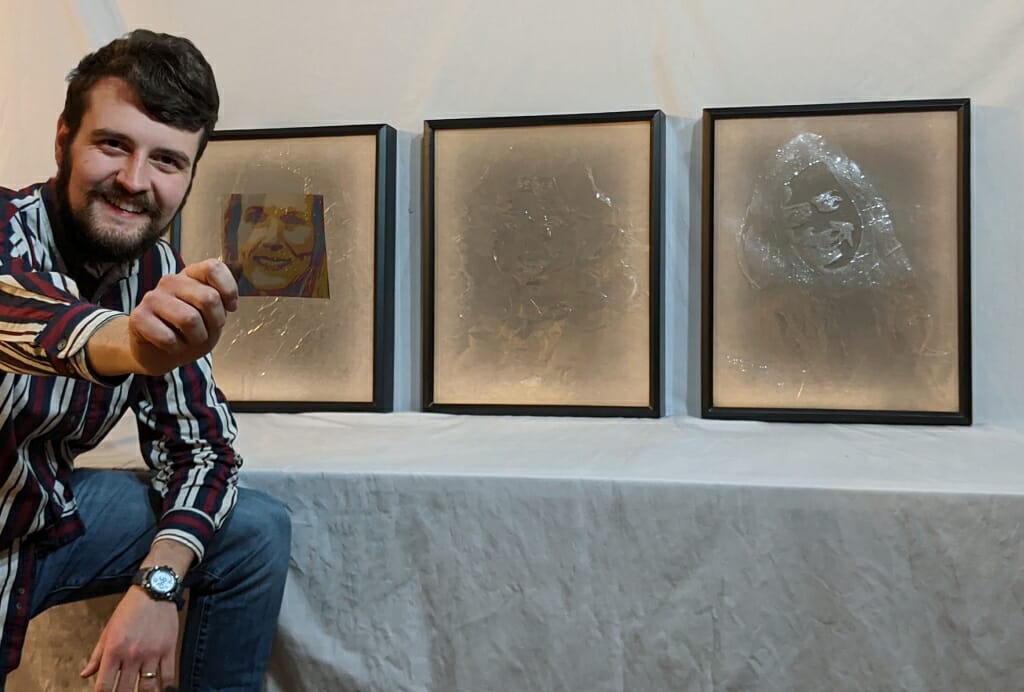
UW–Madison physics graduate student Aedan Gardill demonstrates his portraits of three UW–Madison faculty in the physical sciences. Courtesy of Aedan Gardill
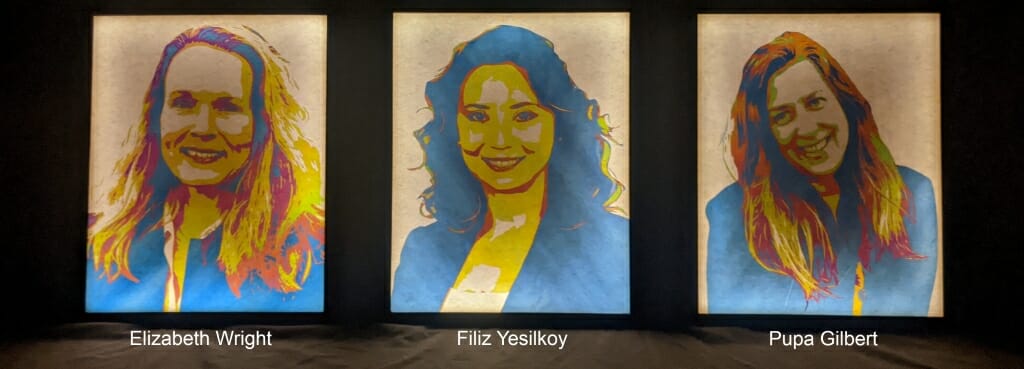
The portraits, which were on display at the Wisconsin Science Festival, can only be seen through a polarized light filter. Courtesy of Aedan Gardill
One month into the new school year, Aurora, a fifth grader at Henderson Elementary School and an aspiring obstetrician, is taking the highs with the lows when it comes to virtual learning.
“Now that I know this COVID is not safe at all, it’s a good thing (we’re not in school), and I have all my stuff here and it’s easier to find,” Aurora says. “But sometimes — no, probably like all the time — my computer acts up.”
Aurora’s teacher, Amber Fiene, knows that there can be some positives to virtual learning, but she is concerned with how much screen time school requires this year.
“Every assignment is electronic, everything is on screens, and (the students) do not have the tangible manipulatives,” Fiene says.
For a week in mid-October, Aurora and nearly 80 other Henderson fifth-grade students took breaks from all-electronic assignments. Instead, they got to work with a series of take-home kits that let them explore the physics of light while creating art that plays off of concepts in physics.
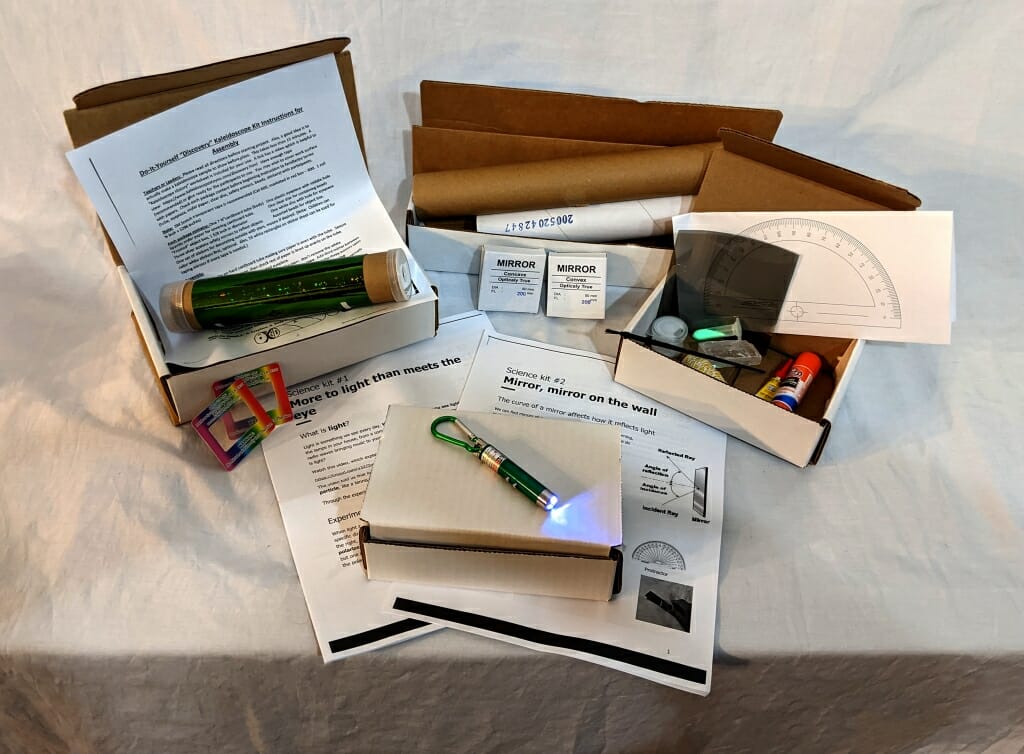
The at-home physics kits featured lessons on light, such as how it functions as both a particle and a wave, and how light changes as it passes through a prism. Photo: Aedan Gardill
The motivation behind the kits comes from University of Wisconsin–Madison physics graduate student and artist Aedan Gardill. Gardill has been illustrating physics concepts with art for years, such as through his Instagram account, where he shares ink drawings. Earlier this year, he applied for a grant from the Madison Arts Commission to create hidden portraits of women in the physical sciences that could only be revealed by using polarized lenses. He also planned to visit local schools to explain the concept behind his art and help students make their own images based on his technique.
By the time Gardill learned he had been awarded the grant, the pandemic was in full force, and his plans had to change. While he could still present his portraits at the Wisconsin Science Festival, school visits were no longer in the cards.
“With the realization this summer that school was going to most likely be online in the fall, I had to rethink how I was going to use the funding from the grant,” Gardill explains. “And that has morphed into providing at-home, hands-on learning experiences that we’ll lead virtually.”
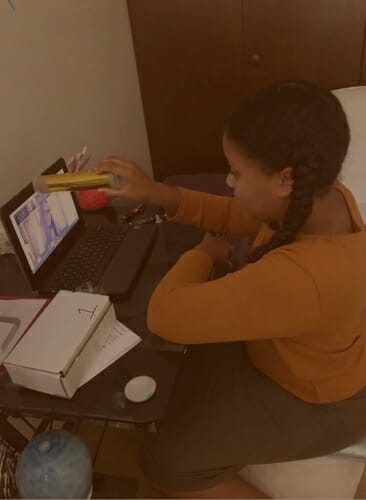
Henderson Elementary School fifth grader Aurora holds up a kaleidoscope to the camera to share the view with her classroom. Submitted photo
Gardill enlisted the help of several graduate students in the physics department, and they worked over the summer to develop four days of activities that illustrate the physics of light. They wrote worksheets in English and Spanish to go with each activity, and used the funding to order items like mirrors, lenses and laser pointers to be included in take-home kits for students.
“For example, in the first kit, the students will look at how light acts like a wave and a particle, which is a really unique property of light,” Gardill says. “They’re going to work with polarizers which utilize that wavelike behavior, and one activity has them make an art piece based off of what I’m doing with the portraits. We’re also using glow-in-the-dark paint and different light sources to mimic the photoelectric effect, which is a significant experiment in physics that first showed that light acts like a particle.”
Other activities included learning about angles of reflection by using mirrors and building kaleidoscopes and demonstrating the differences between white light — which can be diffracted through a prism to show a rainbow of colors — and single-color lasers.
Over the course of four sessions, a physics graduate student worked with a Henderson teacher and a smaller group of students, leading demos that the students could participate in with their kits over Zoom.
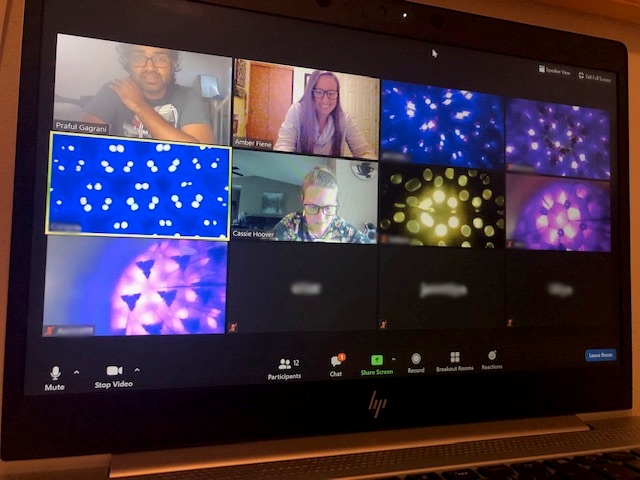
UW–Madison physics graduate student Praful Gagrani leads the class in lessons about how light functions in a kaleidoscope. Photo: Amber Fiene
Before the week began, Fiene had heard from parents and other teachers that they were excited about the opportunity. Aurora and many of her classmates were just as pumped for the chance at a real hands-on experience in the midst of a virtual school year.
“I would say (Aedan) picked really good kits — they’re amazing. The kaleidoscope is my favorite because it’s kind of challenging at first, but at the end you notice that you made something really cool and it’s your own design,” Aurora says. And she is especially excited to learn science because, “I know you have to do science to go to med school, and I do really want to be an OB doctor.”
Funding for Gardill’s work is provided by a grant from the Madison Arts Commission, with additional funds from the Wisconsin Arts Board, the Optical Society of America, the International Society for Optics and Photonics, and the UW–Madison Department of Physics, with special thanks to Arts + Literature Laboratory. UW–Madison physics graduate student volunteers include Abby Bishop, Praful Gagrani, Jimena Gonzalez, Ben Harpt, Preston Huft, Brent Mode, Bryan Rubio Perez, Susan Sorensen, and Jessie Thwaites.
Subscribe to Wisconsin Ideas
Want more stories of the Wisconsin Idea in action? Sign-up for our monthly e-newsletter highlighting how Badgers are taking their education and research beyond the boundaries of the classroom to improve lives.
